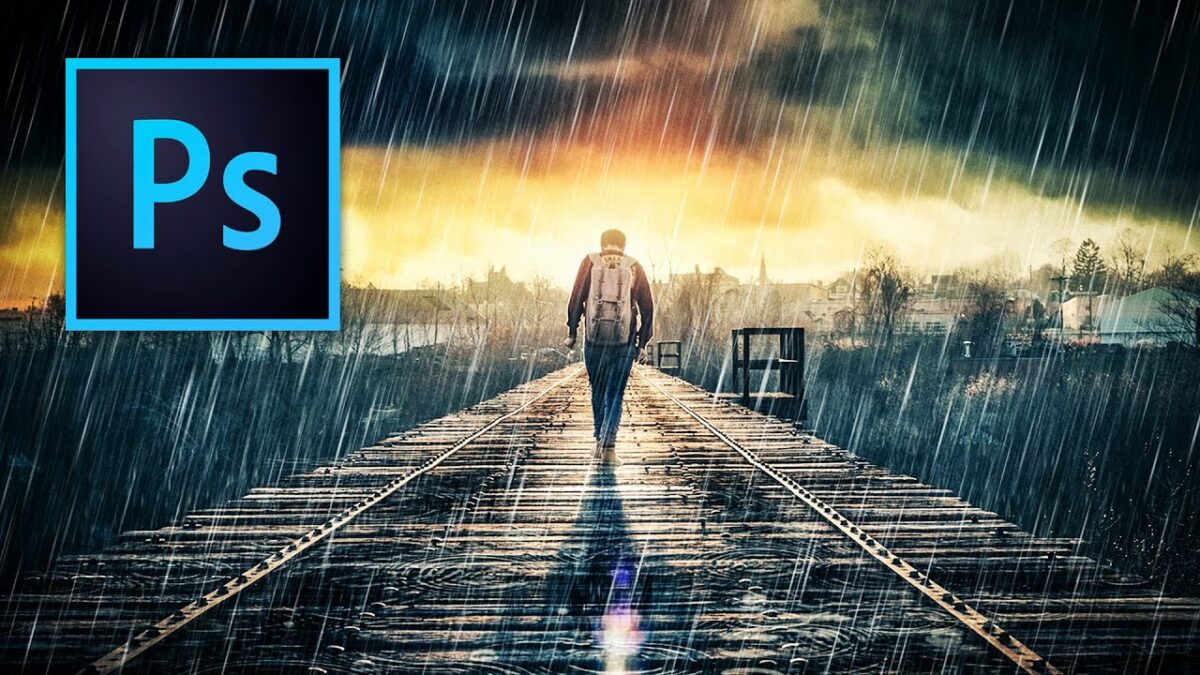Introduction:
Rain, with its gentle droplets or torrential downpours, can evoke a range of emotions and add a dynamic and cinematic quality to photographs. While capturing rain in-camera may be challenging, Adobe Photoshop provides a powerful toolkit for digital artists to simulate the captivating effect of rain in post-processing. This comprehensive guide will walk you through the step-by-step process of adding realistic rain to a photo using Photoshop, exploring various techniques, tools, and adjustments to achieve a convincing and visually striking rain effect.
I. Choosing the Right Photo:
1.1 Photo Selection:
- Begin by selecting a photo that suits the mood and theme you envision with the addition of rain.
- Consider the existing lighting, atmosphere, and the overall ambiance of the image.
1.2 High-Quality Image:
- Opt for a high-resolution image to ensure the rain effect integrates seamlessly with the photograph.
- High-quality images provide a more realistic canvas for the addition of rain droplets and streaks.
II. Launching Adobe Photoshop and Opening the Image:
2.1 Opening Photoshop:
- Launch Adobe Photoshop on your computer to initiate the creative process.
- Create a new document or open an existing one where you want to add the realistic rain effect.
2.2 Importing the Image:
- Import the chosen image into Photoshop as the base layer.
- Ensure the image layer is positioned at the bottom of the layer stack to serve as the backdrop for the simulated rain.
III. Creating a New Layer for Rain:
3.1 Adding a New Layer:
- Create a new layer above the image layer to paint and simulate the rain.
- Use the Brush Tool (B) with a soft, round brush and set the foreground color to white.
3.2 Adjusting Brush Settings:
- Experiment with brush settings such as size, opacity, and flow to achieve a varied and natural raindrop effect.
- Utilize pressure sensitivity if using a graphics tablet for more control.
IV. Painting Raindrops:
4.1 Randomized Placement:
- Paint random white dots across the new layer to simulate raindrops.
- Vary the size and spacing of the dots for a natural and organic appearance.
4.2 Angle and Direction:
- Consider the direction of rain in the scene and paint raindrops at angles that align with the existing elements in the photo.
- This step enhances the realism of the rain effect.
V. Adding Motion Blur:
5.1 Selecting Rain Layer:
- With the rain layer selected, go to Filter > Blur > Motion Blur.
- Adjust the angle and distance settings to simulate the motion of raindrops falling.
5.2 Duplicating and Varying Blur:
- Duplicate the rain layer and experiment with different motion blur settings on each duplicate.
- Varying the blur adds depth and dynamism to the rain effect.
VI. Adjusting Opacity and Blend Modes:
6.1 Opacity Control:
- Fine-tune the intensity of the rain effect by adjusting the opacity of the rain layers.
- Experiment with different opacities to find the right balance between subtlety and visibility.
6.2 Blending Modes:
- Explore blending modes such as Screen or Overlay to seamlessly integrate the rain with the underlying image.
- Each blending mode imparts a unique character to the rain effect.
VII. Creating Rain Streaks:
7.1 Adding Vertical Lines:
- Create a new layer for rain streaks and use the Line Tool to draw vertical white lines.
- Vary the lengths and thickness of the lines to emulate rain streaks at different distances.
7.2 Motion Blur for Streaks:
- Apply motion blur to the streaks layer to simulate the dynamic movement of rain streaks.
- Adjust the angle and distance settings for a realistic appearance.
VIII. Atmospheric Adjustments:
8.1 Adjusting Hue/Saturation:
- Fine-tune the color of the rain layers to match the overall tone of the image.
- Use adjustment layers like Hue/Saturation to blend the rain seamlessly with the existing colors.
8.2 Adding Atmospheric Elements:
- Introduce fog or mist to the image to enhance the overall atmosphere and complement the rain effect.
- Create a new layer for fog and experiment with brushes or filters to achieve a subtle misty ambiance.
IX. Realistic Reflections:
9.1 Adding Reflective Surfaces:
- Enhance realism by adding reflections of rain on surfaces such as roads or windows.
- Duplicate the rain layers and position them where reflections would naturally occur.
9.2 Adjusting Opacity for Reflections:
- Lower the opacity of the reflection layers to simulate the transparency of reflections on wet surfaces.
- This step adds a touch of authenticity to the rain effect.
X. Fine-Tuning and Refining:
10.1 Iterative Review: – Step back and review the entire composition, considering the placement, motion, and overall visual impact of the rain effect. – Make iterative adjustments to opacity, blend modes, and additional elements for a refined and cohesive result.
10.2 Saving Iterative Versions: – Save iterative versions of your project to preserve different stages of the creative process. – This practice allows for experimentation and easy backtracking if desired.
XI. Exporting the Image with Realistic Rain:
11.1 Saving in Appropriate Formats: – Save the final image with the realistic rain effect in the desired format, resolution, and color space. – Consider the intended use, whether for digital display, print, or further digital manipulation.
11.2 Sharing and Showcasing: – Share your image with the added rain effect on social media platforms or within digital art communities. – Engage with fellow photographers and digital artists, gather feedback, and celebrate the atmospheric beauty of your rain-infused creation.
XII. Conclusion:
Adding realistic rain to a photo in Adobe Photoshop is a journey into the realm of atmospheric storytelling, where digital artistry brings nature’s elements to life. By skillfully painting raindrops, applying motion blur, and integrating reflections, artists can create a captivating and immersive rain effect that transforms ordinary scenes into cinematic masterpieces. As you embark on your rainy day adventure, let your creativity guide you, experiment with different techniques, and witness the transformative power of Photoshop in crafting images that dance with the magic of falling rain.
